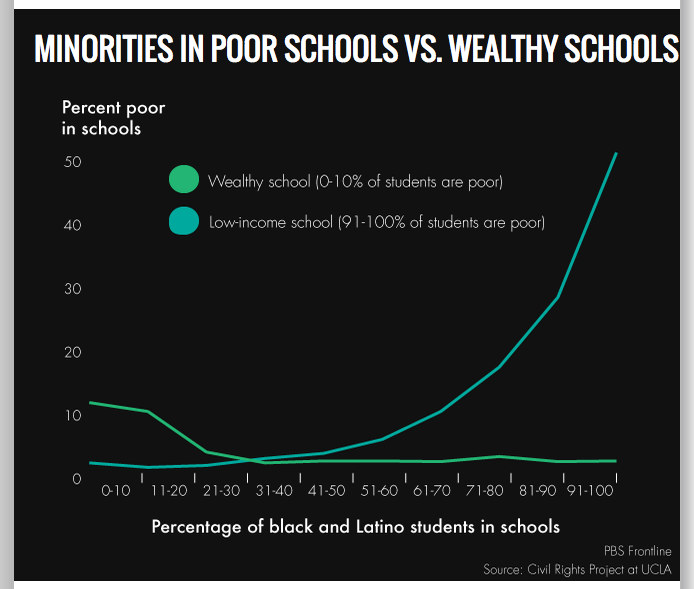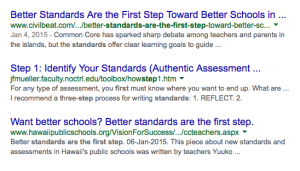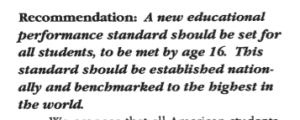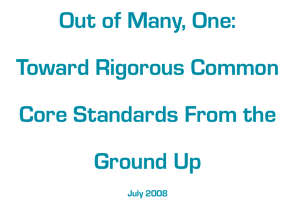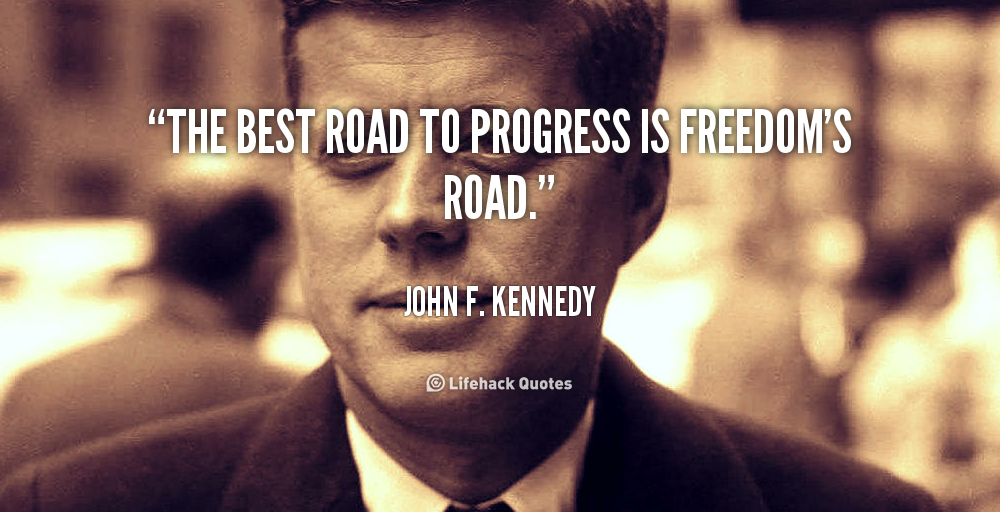Who convinced a nation that we should put “stiff accountability” in place without first ensuring that all schools and children had the necessary resources to achieve the excellence in education we demand of them? It was “them,” the rulers; not we, the People.
The education reform oligarchy marketed “accountability,” tied their sales pitch to freedom of choice, used statistics to the point of outright trickery, and suppressed the truth.
They set a game plan and methodically stuck to it.
They shifted our focus from what was set by the 1965 Elementary and Secondary Education Act (ESEA) — better educating teachers and counselors, providing sufficient instructional materials, ensuring students are supported, and engaging parents and the community —to— stiff accountability for student outcomes as judged by standardized test scores. And they took aim at teachers…from the start.
Hired to do public opinion polling by the Carnegie Forum on Education and the Economy under the direction of Marc Tucker, Mr. Lou Harris explained his findings at the 1986 National Governor’s Association (NGA) meeting.
“…people are convinced the heart of the matter lies in what is done about teachers.…
Of course, this means, in turn, new ground rules for teachers…such as, paying teachers by a new bottom line, …and finally, finally, at last, paying teachers competitive salaries on a level, for example, with accountants.
But then with these upside inducements must also go stiff, stiff accountability, such as annual reporting of school-wide student performance,… and this is the key one — allowing parents the chance to choose which public school to send their kids to as a device to reward schools that are successful.
…this means a new compact in education, a trade-off, if you will, between higher salaries and more autonomy for teachers on the one hand, in exchange for higher standards and accountability for teachers measured, in what: in terms of student performance. This is basic.”
There’s your basis for No Child Left Behind — in 1986. Mind you, it’s a theory… the outcome-based theory! Did it work? Did we get the results we sought?
Their focus was not on the unequal inputs that are inherent in a public school system the size and magnitude of our U.S. system. Their focus was not on our high level of poverty and the pockets of community decay that has been allowed to grow and fester. Instead, this group of politicians and think-tankers focused on “stiff, stiff accountability” in exchange for more pay.
They did it! We got a federal accountability system based on student performance but without elevating the teaching profession as a whole. Duped? You bet we were. Where is the accountability for that? Who is answerable for ignoring the needs of teachers and the desire of parents?
You teachers…listen up…. jump those hoops, not because you are a professional doing your job but for the monetary reward. Worship the almighty dollar just like the oligarchy. It’s how they see things in their world…. these people who own and rule the world. This all made sense to them, well, not all of them.
Not everyone attending the 1986 NGA meeting agreed with the theory of outcome-based accountability.
Mrs. Mary Futrell, then head of the National Education Association, spoke out in favor of a different approach…
“We believe the primary responsibility of an accountability system or an evaluation system, it should be for professional growth. To help the teachers do a better job. We have a real concern that as we look at school-based or school performance or student performance, that we will try to tie teachers’ pay to that, even though there is no research to support it.”
Research? The agenda of the oligarchy was never backed by good research and still isn’t…29 more years later! Research and the dissenting voices have been ignored repeatedly. In this game, both are left on the sidelines.
The outcome-based political agenda moved steadily forward while the focus on inputs and real improvements took a back seat.
By the 1989 NGA annual meeting, President George H. W. Bush (41st president, 1989-93) had entered the picture and had been invited to speak.
“To have reform, excellence in achievement must be recognized and rewarded.
To have reform, federal dollars should be targeted to those most in need.
To have reform, we need flexibility and choice, choice for parents, choice for schools in their selection of teachers and principals.
And finally, the essence of reform is accountability in education and reward for those schools that show progress.”
The essence of reform is accountability — not improving schools to the point where all our schools are of high quality?
At that same gathering, then Governor Bill Clinton expressed,
“I support, as I think you know, your education position. I’m for accountability, choice, alternative certification.”
And by 1991, we had Lamar Alexander, a very strong player on the reform team, positioned at the D.C. front-line as the secretary of education.
“Alexander has also put together a new education agenda that includes a controversial proposal for instituting national achievement tests and more emphasis on adult learning and training for the work force. ”
New agenda? More adult training, just like better pay for teachers?
“His Better Schools program for the state [TN] included a new merit pay system for teachers, tougher standards for students and more emphasis on science, computers and mathematics.”
Then in 1996, the first Education Summit gathered together the governors with business and education leaders.
“Their mission: To start a national effort to establish high academic standards, assessment and accountability and improve the use of school technology as a tool to reach high standards.”
Education and the economy were wed in an unholy matrimony that put the quality of education for public school children at risk while putting a bundle of public dollars in a relatively small group of private pockets. This marriage also produced Achieve as “an external, independent, non-governmental” organization for moving the main agenda forward.
“All students should graduate from high school ready for college, careers, and citizenship.”
As we now know, the focus on citizenship didn’t happen. (For the research, scroll down to “In life” section of this blog.) Just like with teacher pay and more focus on adult training, we were duped again. They dangled carrots and we bit.
Throughout all these years, it was reported that the public supported “accountability.” There’s nothing wrong with that. But, did the public realize that it was always an accountability package that put the American education system up for sale?
The oligarchy’s plan always feed the education-industrial complex. William (Bill) Bennett, who went from being President Reagan’s second secretary of education to being a co-founder of K-12, Inc. in 1999, typifies how being politically powerful leads to profits and doesn’t require producing the promised results.
“As K12 Inc. notes in its annual report, ‘most of (its) revenues depend on per pupil funding amounts and payment formulas” from government contracts for virtual public charter schools and “blended schools'(combining online with traditional instruction) among other products. In 2014, K12 Inc. took in $919.6 million from its business.”
And all of the political maneuvering and manipulation of the public over these past decades opened the door further for the oligarchy to use ESEA (No Child Left Behind) as a way to forever (or maybe not) change the focus of the law from supports for children of low-income families and improvement of educational quality for all children —to—“accountability, flexibility, and choice.”
Enter Mr. Obama: He never promised anything that strayed too far from the NCLB goals. And the politics of neoliberalism (scroll to definition in this blog) has doomed him to repeat and amplify the mistakes of the past. The toxicity of D.C. politics is killing public education.

From Democrats for Education Reform – They say they are an “organization that cultivates and supports leaders …who champion America’s public schoolchildren.” Others beg to differ.
Education reform is their game and their message has been successfully framed. Data and disaggregation of it isn’t the problem. Who controls the data is.
Parents, you aren’t really players; you are targets of their messaging. And you are pawns. You need to get off the sidelines and into the action — and play responsibly. To do so, you need the truth.
What is missing is the truth.
In roughly 30 years, we have not been able to break away from Mr. Marc Tucker’s vision and plan for America’s education/workforce development system. This is the same man who now proposes that we can “fix” the accountability system by eliminating the power of local boards and putting us all under the thumb of State control (yes, with a capital “S”).
The country bought into the outcome-based theory of education reform. We experimented. Now, can’t we see the results?
“…a return to levels of integration last seen during the Johnson administration.”
Separate schools are inherently unequal which is why federal education law must focus on providing quality inputs while only monitoring outcomes for continuous improvement purposes.
The gains we made in narrowing the achievement gap, after the implementation of the 1965 ESEA, have slowed considerably since 2004. 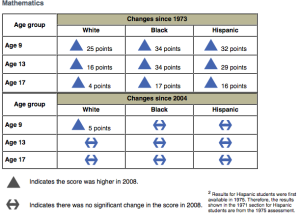
If we wanted equal educational opportunity, we are faltering.
If we wanted an accountability system that closes down neighborhood schools, fires teachers, and lowers the standards for entry to the teaching profession through alternative certification and emergency measures to fill needed teaching positions, we are there.
If we finally want to do the right thing for every child in our public schools right now, we have to kill No Child Left Behind, ditch the theory it was based on, and go back to a system that did produce results.
NCLB will be replaced, but, will the new law really be based on what we learned from this 30 year still-living experiment in outcome-based reform? Since Senator Lamar Alexander had a hand in developing the game plan from the beginning, he should be able to provide answers. Isn’t that what stiff accountability demands? Answers.


